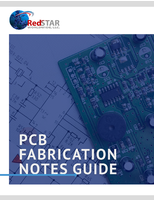Ethernet-Compatible Powerlink Control Technology Simplifies and Speeds Design for Innovative Tube-Bending Production Cell

o technology helps to reduce footprint, and cut programming time to just 2 weeks
Fort Smith AR, January 24, 2008 --- Ethernet-compatible Powerlink motion and machine control hardware is at the heart of an innovative new automatic cell for manufacturing tubular automotive parts, developed by Unison. The Powerlink system controls four axes of motion, plus the I/O needed for the continuous operation of the process, and made a major contribution to the rapid development of the cell, and its exceptionally small footprint.
Called Uni-vercell, Unison's machine packs a complete end-to-end loading/end-forming/bending and vision inspection process in the space typically required for a standalone tube-bending machine. Uni-vercell breaks new ground in terms of performance and compactness in this manufacturing area by exploiting an articulated robot arm to manage all the intervening movements and transfers. The arm eliminates the need for the conventional carriage of a tube-bending machine, and also optimizes manufacturing precision because it retains the part for the duration of the process - eliminating a lot of hardware in the process.
The tube-bending and end-forming processes, and general operational control of the cell, are handled by the Powerlink system, based on the NextMove e100 machine controller from Baldor Electric Company. This controller manages four MicroFlex e100 servo motor drives which control the tube bending head's clamp, pressure die and bend arm axes, plus the actuation of the end forming tool for flaring and/or compressing. In addition to these core functions, the controller manages all of the cell's I/O, plus the link to the front end user interface.
A compact footprint was one of the key design objectives for the new cell, and Unison believes the simple daisy-chained nature of the high speed Powerlink network reduced the electrical system's size - and the wiring and system building tasks - by probably 50% compared with conventional analog motion control.
Powerlink was also selected as the control platform for a number of technical reasons. For this project, the 100 Mbits/second network provides the bandwidth to dynamically control each motor's position and torque parameters - control mechanisms that are not normally possible with a traditional analog interface. This provides a simple means of gaining ultra-precise control over the bending process - to optimize programs and create smooth and accurate bends. The network also made it easy to deploy all of the local I/O required for operation of the cell. Some I/O resides directly on the controller. Other I/O is located on the distributed servo drives, yet is still controlled in software as if it were local. The cost of this remote I/O was also minimized as the Powerlink standard is compatible with CANopen device profile, allowing readily available CANopen I/O modules to be employed.
Another reason behind the selection of Powerlink was system expansion and evolution. This cell is designed for the repetitive production of mass volume parts such as automotive fuel, water or hydraulic components, and the bill of materials is a major consideration. There is no front end user interface on the system. This resides on a laptop that is connected as required to the cell's NextMove e100 controller, to download a production program. However, Unison also expects the cell concept to appeal to more general metalworking fabrication companies, who manufacture in smaller batches, and for this application it's likely that a local man machine interface will be required. Using a standard Powerlink gateway device, the cell can be connected to a PC or conventional Ethernet network easily. Another expansion possibility is more motion control axes, for more complex end forming for example, or labelling/marking. Most conventional motion controllers handle only a discrete number of axes. With Powerlink, and Unison's preferred Powerlink controller designed by Baldor, the number of axes - and other network-located functions such as I/O - is almost unlimited. This flexibility allows Unison to quickly adapt the machine for future applications.
Powerlink is a standard technology, which is another attraction for Unison who operate in a very competitive sector of the machinery industry. However, Unison chose Baldor's Powerlink hardware because its NextMove e100 controller comes with a versatile machine control development environment called Mint. This provides a high level language for machine control that is similar in style to BASIC, but with advanced structured programming features, multitasking support, and a very large library of high-level 'keywords' that provide ready-to-use software for common motion control functions (and other machine control functions). Using Mint, and its development toolsuite, Unison wrote the software for the entire cell in just two weeks. This included the interface to the PC front end, which was simplified thanks to the free availability of ActiveX tools, making it very easy to create a Windows-based PC application that communicates with the cell controller via USB.
"Powerlink hardware reduces the system building complexity, and the software support on Baldor's controller made it particularly easy to develop. For this machine I managed to program the first iteration produced in just two weeks - which speaks volumes about the simplicity of the control system and the development tools," says Mike Kay, Unison's lead engineer on the Uni-vercell project.
Unison's Uni-vercell delivers remarkable performance. It can fabricate parts to an overall accuracy of 0.1 mm. Although the cell is optimised for repetitive volume applications, the flexibility of the robot arm allows it to be configured easily for batch production as well. Accuracy and repeatability are assured, because of the system's use of closed-loop electronic control. The drift-free performance offered also means that the machine can be instantly set up to fabricate parts just by loading a program, rather than making and scrapping trial parts until the configuration iz right.
The cell is designed for continuous use and can easily fabricate thousands of parts a day. With a typical energy consumption of around 1.5 kW (measured using an example part with three bends and one end form, including stacking at the end of the process, and 100% inspection,) daily electricity running costs are around 7 Euros.
The software-controlled nature of the machine delivers many further technical advantages, including much greater control over the bending process. Fine adjustments to torque levels or movement profiles can be made, for example, to optimize bend quality. Complicated shapes that might be difficult to make on a conventional hydraulic machine can also be produced easily, because the machine is able to make intervening adjustments or moves between stages, to avoid a collision for instance. This programmability can equally be exploited to optimize cycle time - by making only the minimum movements required.
Programming the cell for an application can be achieved very rapidly thanks to Unison's powerful front-end software package, Unibend, and the friendly teaching software supplied with the robot. Programming bends and end forms requires only the input of data such as position, angle, rotation and torque, and the machine sets up automatically. All of the intervening movements required by the robot may then be programmed by simply positioning the arm manually and capturing the data. Using these simple techniques, a complete cell program can easily be produced in less than an hour. The fabrication processes and movement-related operations are also discrete stages of a cell program, allowing modifications such as fine tuning of bending or end forming, or movement optimization to be made quickly, and without generating a new program.
Energy saving is a further major advantage of Unison's new cell, as it only consumes a significant amount of electricity during the actual bending and forming operations. No hydraulic system needs to be maintained at pressure, for either the bending or end forming tools. Typical energy consumption rate for a continuously processing cell is around 1.5 kW per hour.
More information:
Baldor Electric Company, PO Box 2400, Fort Smith, AR 72901, USA
t: 479 646 4711; f: 479 648 5792; e: sales.us@baldor.com; www.baldor.com




